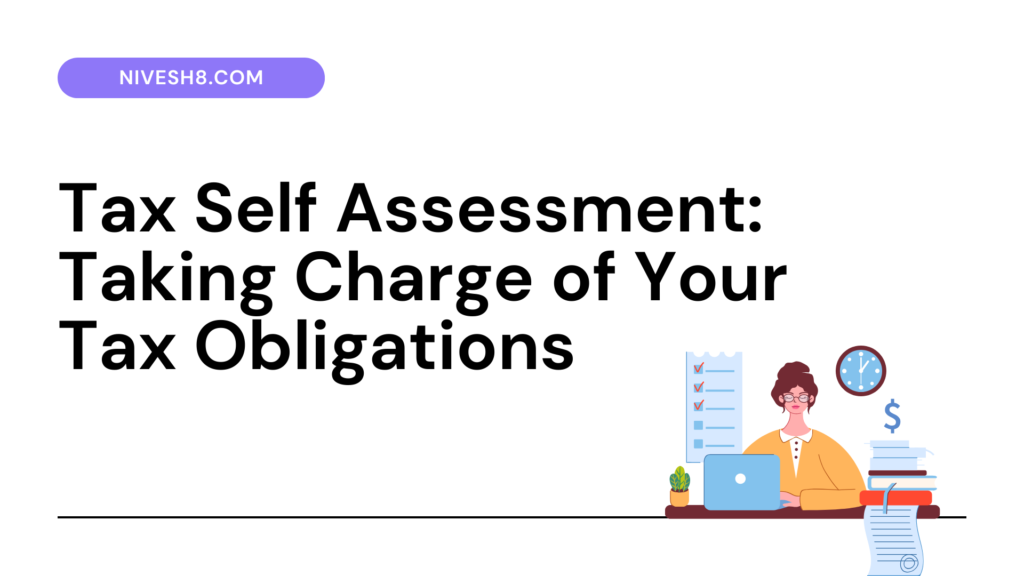Calculating and reporting their own income tax obligations to the tax authorities, individuals and companies use tax self-assessment. This is a vital step in India fulfilling your tax responsibilities, particularly if your income is not totally covered by tax deducted at source (TDS). Whether your business is small, you are a freelancer, salaried employee, investor, or small business owner—knowledge of tax self-assessment will help you avoid penalties and guarantee accurate tax filing.
Tax Self Assessment: Definition
Calculating your income tax liability on your own before submitting your income tax return (ITR) is known as tax self-assessment. It entails figuring your entire income from all sources, subtracting qualified exemptions and deductions, and getting your net tax due. Your total tax liability must be paid as self-assessment tax before submitting your return if it exceeds the tax already paid through TDS or advance tax.
Why should one engage in tax self-assessment?
- Legal Requirement: Before submitting the ITR, the Income Tax Act requires payment of any remaining taxes as self-assessment.
- Ignoring Penalties: Not paying the tax due before filing could cost interest charges and penalties.
- Accuracy in Filing: Guarantees that your tax return is whole and accurate.
- Financial Transparency: Shows your tax obligation clearly, guiding your financial management.
- Timely Compliance: Steers clear of Income Tax Department legal entanglements and notices.
When should one pay the self-assessment tax?
If your overall tax due is more than the TDS already deducted, you must pay self-assessment tax. You have made more money than TDS covers, like:
- Independent income
- Rental income
- Investment capital
- Income derived from dividends or interest
- Your advance tax payments fall short of the whole tax owing.
Self Assessment Tax Calculation Methodologies
Here is a detailed instruction for computing tax self-assessment:
- Determine Total Income: Combine your income from all sources—salary, business, capital gains, rental income, and so forth.
- Apply qualified exemptions and deductions under areas including:
- 80C: PPF, ELSS, Life Insurance Premium investments
- 80D: Premiums for health insurance
- 80G: Gifts to qualified nonprofit organizations
- Standard Deduction: ₹75,000 for salaried staff members
- 80C: PPF, ELSS, Life Insurance Premium investments
- Apply the relevant income tax slab rates to find the overall tax due.
- Calculate the tax liability then subtract any TDS or advance tax paid from it.
Self Assessment Tax = Total Tax Liability − (TDS + Advance Tax)
Online Self-Assessment Tax Payment Methodology
Online payment of self-assessment taxes is quick and easy. Follow these guidelines:
- Visit the e-Filing Portal: Visit the official Income Tax Department page.
- Select “e-Pay Tax” under “Services”.
- Paying income tax from Challan 280 is done here.
- Add Your Details:
- Pan
- Year of Assessment
- Type of Tax (Choose “Self Assessment Tax”)
- Bank information required for online payments
- Pan
- Finish the Payment: Pay using a debit card or net banking.
- Download and print the Challan 280 receipt following a successful payment for your records.
ITR Self Assessment Tax Reporting Guide
- Reveal Your ITR Form: Open the pertinent ITR form by logging in to the income tax e-filing portal.
- Enter the payment information from your Challan 280 receipt on the Tax Details Tab.
- This information is required to confirm the tax payment: BSR Code and Challan Number.
- This information is required to confirm the tax payment: BSR Code and Challan Number.
- Check and submit: Verify the information again before turning in the return.
The advantages of tax self-assessment
- Tax filing accuracy helps to lower the possibility of differences between your declared income and tax paid.
- Avoiding Penalties: Guarantees you won’t pay interest for late tax payments.
- Knowing you have paid your taxes helps you to relax.
- Clear knowledge of your tax obligations helps you improve your financial management.
Typical Errors to Steer Clear Of
- Underreporting Income: Declaring none of all the sources of income might result in fines.
- Miscalculating your liability could lead to either too much or too little payment of taxes.
- Paying after the deadline exposes interest charges under Section 234A, 234B, and 234C.
- Download and save the Challan receipt always as evidence of payment.
- Ignoring Interest Components: Make sure to mention any interest owing on postponed taxes.
Calculation Examples
Assume your whole income from all sources comes out to be ₹12,00,000. Your taxable income is ₹10,00,000 following deductions valued at ₹2,00,000.
Tax on ₹10,00,000: ₹1,12,500 including cess and surcharge.
- TDS Deducted: ₹80,000
- Advance tax paid: ₹10,000
Self Assessment Tax: ₹1,12,500 – (₹80,000 + ₹10,000) = ₹22,500
FAQs Regarding Tax Self-Assessment
- Is self-evaluation tax required?
Indeed, you have to pay self-assessment tax before submitting your return if your tax liability is more than TDS and advance tax paid. - Can I pay offline my self-assessment taxes?
Indeed, you can pay it using Challan 280 at authorized banks. - What happens if I fail to pay my self-assessment tax on schedule?
Late filing penalties and interest under Section 234A could follow from failure to pay on time. - How can I find out the situation of my tax payment for my self-assessment?
Your Form 26AS or the e-filing system will let you view it.
Conclusion Notes
Responsible tax filing is naturally based on tax self-assessment. It not only guarantees that you remain compliant but also guarantees that you avoid needless legal hassles or penalties. Effective financial management depends on accurate tax calculations and payment of any due taxes before return submission. Use internet payment tools and monitor your purchases to prevent last-minute uncertainty. Tax self-assessment can be a simple and stress-free process if you are proactive and diligent.



